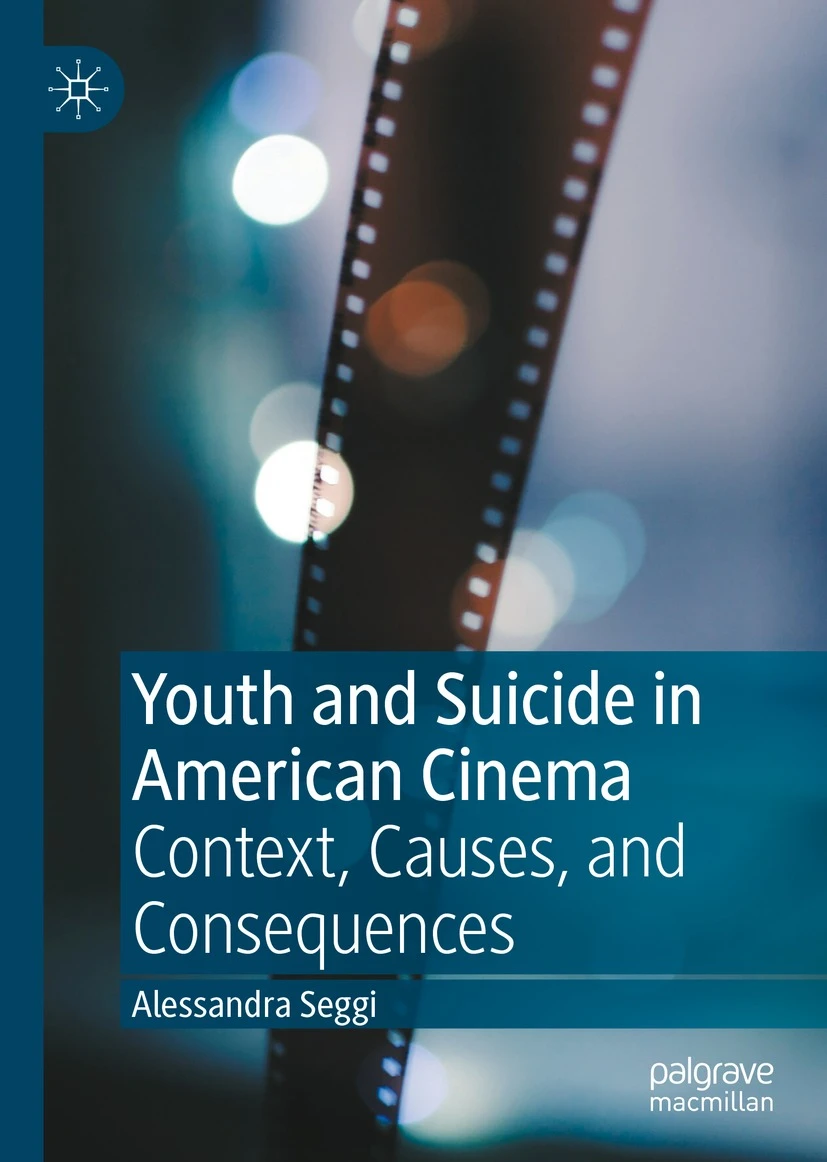Fulbright Chronicles, Volume 2, Number 4 (2024)
Author
Kate Brennan

Youth and Suicide in American Cinema: Context, Causes and Consequences by Alessandra Seggi, who was a Visiting Fulbright Scholar from Italy to The New School, New York City, 1999-2000.
Like all art forms, film often reflects real life. However, in Youth and Suicide in American Cinema, author Alessandra Seggi re-conceptualizes the Wildean notion that most of the time, it happens the other way around. In today’s blue light-tinted world, we often use film as a template—consciously or unconsciously—after which we model relationships, body image, world views and the things we buy. This is especially true for young people, who live in a “society of the spectacle, where life is like a movie, not the other way around” (88).
In her book, Seggi assesses the consequences of living in such a society. According to the World Heath Organization “[T]here is increasing evidence that media can play a significant role in either enhancing or weakening suicide prevention efforts” (110). The author sets out to explore the impact of film suicides on real-life suicides by drawing from a sizable pool of films and deconstructing their portrayals. In mapping out the etiology of suicidal behavior, no stone is left unturned; in each film, Seggi takes stock of the “social facts” outside of psychological contributors to suicide, capturing the sociocultural panorama of each example she cites.
The book focuses on youth specifically, as youth are among the most vulnerable to media influences. On top of the regular strains of adolescence, they are also growing up in a media-saturated era that allows them to consume media products on personal devices and “binge watch” on streaming services. Seggi is careful to first and foremost establish an understanding of—and with—her audience, whom she says are “over-regulated by the adults, who essentially make choices for them, while also being alienated from them” (62). She argues films about youth, made by adults, are “not so much descriptive of youth experiences as prescriptive” (77), and as a solution, she invites youth to change the way they consume media.
In addition to offering film analyses, the book equips young audiences with a proactive media literacy strategy.
In addition to offering film analyses, the book equips young audiences with a proactive media literacy strategy. Readers are presented with a list of questions divided into four clusters: initial reactions to and opinions of the film; the film’s portrayal of suicide; accuracy vs. allure; and life-affirming changes viewer might choose to make. The questions are thoughtful and versed in pillars of contemporary media studies such as Culkin’s theory, which states a media-literate population is essential.
With the savvy of a film professor, Seggi first teaches readers to identify types of suicide portrayals—altruistic suicide in It’s a Wonderful Life, attention-seeking suicide in Better off Dead, and even a satire of glorified suicide in Heathers. Next, she implores readers to poke holes in these films and consider the effects these storylines might have on vulnerable audiences. This method aims to shatter the trance film so often lulls us into—away from the theatrical, Romeo-and-Juliet portrayal of suicide as a resolution and away from the juvenile idea that suicidality earns one social rewards, such as love.
Small changes to the ways in which suicide is rendered on-screen can result in a tangible impact on a more complex system. To back up this claim, Seggi compares the Werther effect (copycat suicides following media reports that include suicide methods) to the Papageno effect (reporting on suicide responsibly by presenting non-suicide alternatives to crises). She uses the television show 13 Reasons Why as an example of both, noting how the producers initially included a scene that shows a suicide method in detail, then later deleted it following advice from medical experts.
Seggi’s goal is not to change what viewers watch, but rather how they watch it. Because frankly, Hollywood is Hollywood and capitalism is capitalism—films that include suicide prevention measures like hotlines, therapy, healthy relationships, and good self esteem rarely haul in big revenue. If a film includes suicide, Hollywood will more likely than not present suicide two-dimensionally, with a smattering of drama, romance, and sexiness—anything that sells. But through the media literacy exercise, Seggi provides youth with armor to protect themselves against a system that procedurally exploits them. The book is written as an act of service for all unfortified youth, reading like a voice that cuts through static to say, “I’m here, I’m listening.”
To take things up a level, this book is not just a helpful tool for youth but also for anyone who has been affected by suicide. In the preface, Seggi shares a personal anecdote about how she came to understand suicide from an early age that establishes a sense of trust which remains throughout the book. She applies an exceptional level of care to discussions around the social stigmas of suicide and emotions like guilt, blame, and heartache. A lingering lesson from this book is that film as a medium can also be healing, and if we can learn to dismantle the etiology of on-screen suicides, perhaps we can begin to untangle our real-life grief as well.
Alessandra Seggi, Youth and Suicide in American Cinema: Context, Causes, and Consequences. London: Palgrave Macmillan: 2022. 341 pages. $129.99.
Biography

Kate Brennan is a member of the 2022 cohort of journalists from Fulbright Germany’s Berlin Capital Program. A newspaper and online journalism graduate of the S.I. Newhouse School of Public Communications, Syracuse University, she is a recipient of awards from organizations, such as Hearst, the Online News Association, Scholastic and the Society of Professional Journalists. She is a full-time writer for a publication based in New York City that emphasizes women’s stories, and recently collaborated on a podcast about Afghan women who were or are currently living under the Taliban. She can be reached at katebrennan.nyc@gmail.com
